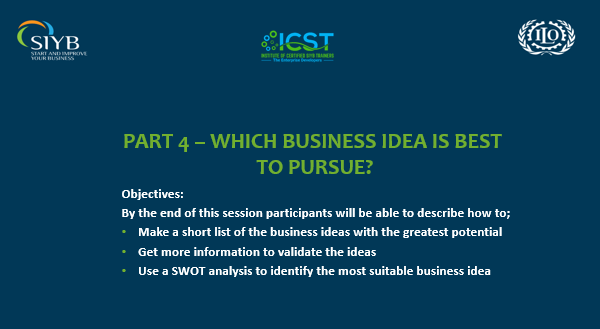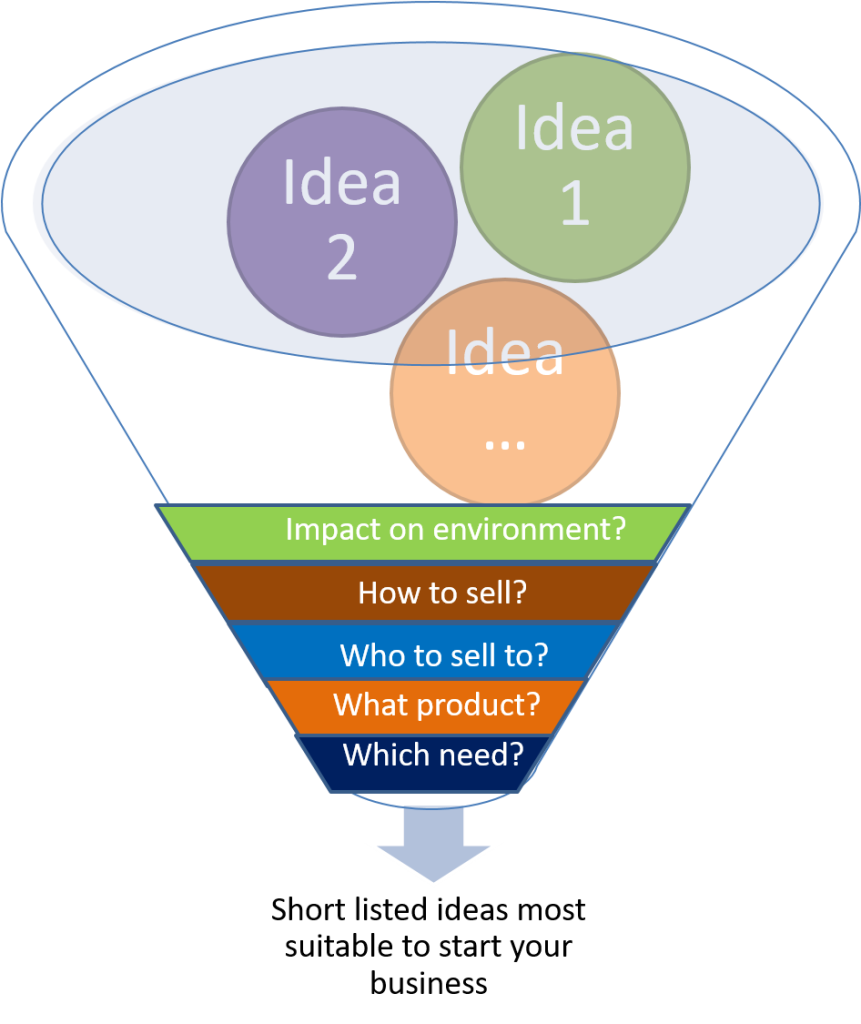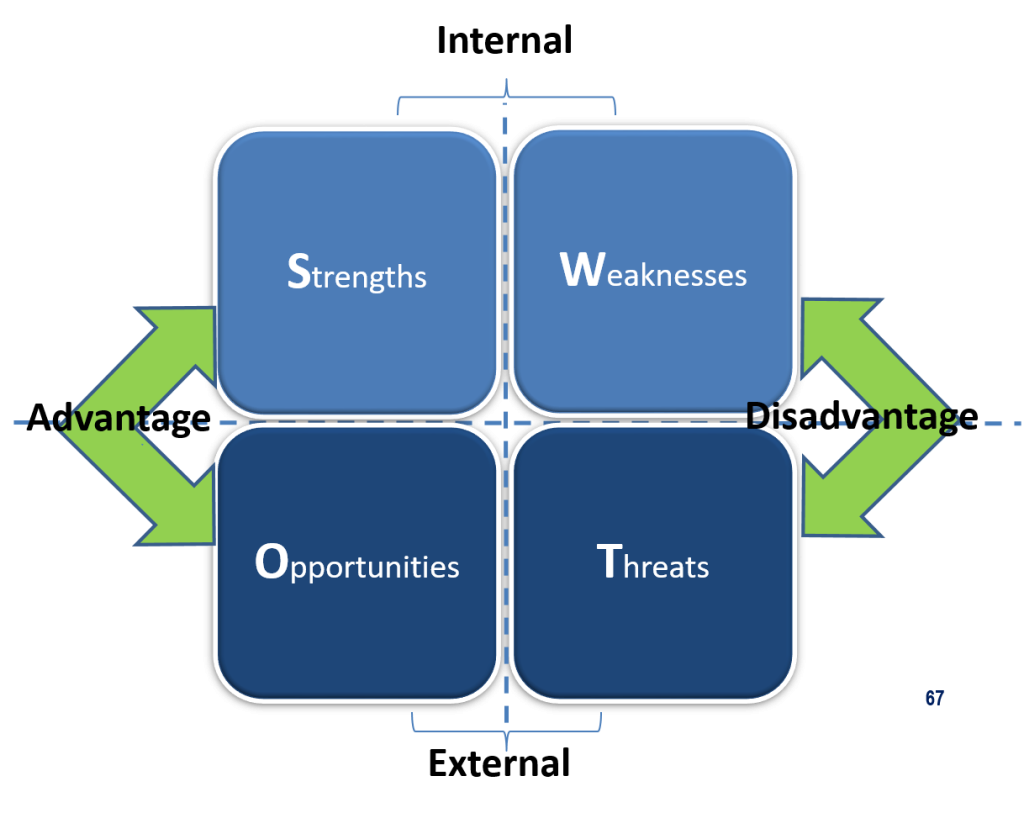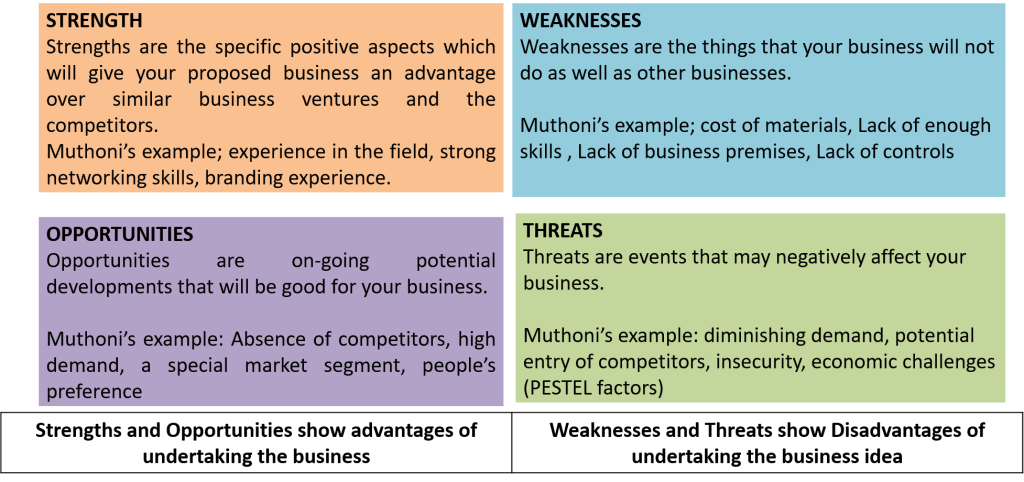

| WHICH | •Which unfulfilled need do you want to satisfy for your customers? •Which needs do your goods or services satisfy for the customers? |
| WHAT | •What goods or services do your customers want? •What quality of products do your customers want? •What information do you have about the goods or services for this business? •What are the positive or negative impacts your business will have on your community and the natural environment? |
| WHO | •Who will be your customers for this particular business? Will there be enough of them to make your business profitable? •Who are your competitors and what are their strengths and weaknesses? |
| HOW | •How will you be able to supply the quality of goods and services that your customers want? •How much do you know about the quality of goods and services that your customers want? •How does running this sort of business suit your personal characteristics, skills and situation? •How do you know that there is a need for this business in your area? •How do you think you will feel about running this business in ten years? |
There are three important groups that you should talk to:
a)Potential customers: Their views are essential to your understanding of whether or not your proposed product is important to them and if you need to modify your idea to meet their needs.
b)Competitors and suppliers: Their views will reveal the challenges of competition that you would face, as well as other issues related to your potential business.
c)suppliers and entities:
d)Financial institutions: Find out the lending requirements to determine whether borrowing for a new business is possible.
e)Key informants and opinion leaders: These are people who would know a lot about the type and field of business you want to go into and/or a lot about your potential customers. Their views would give you a lot to think about and could also give you a better insight into the feasibility of your business idea.
For each business idea, plan how to get more information through field study by completing the form below:
•SWOT analysis helps you to focus on the possible problem areas and the potential advantages of each idea.
•SWOT stands for;


Now do a SWOT analysis for each of the three business ideas you have selected. First make three copies of the SWOT analysis form. Think carefully about the strengths and weaknesses of each business idea. Then think of the external environment for this business. What are the opportunities and threats in your business environment? The “key informants” you spoke to during your field research may have pointed these out to you.
ICST Enterprise Developers is a business development service provider.We are partners of the International Labor Organization (ILO) to implement their Business Management programme dubbed Start and Improve Your Business (SIYB).